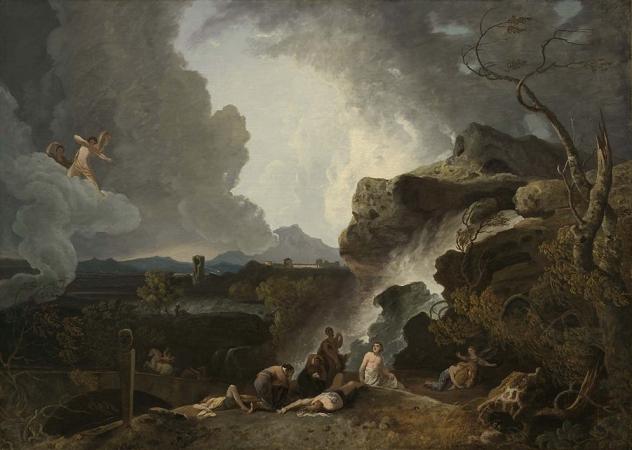Niobe. In Greek mythology, Niobe was a daughter of Tantalus and of either Dione, the most frequently cited, or of Eurythemista or Euryanassa, and the sister of Pelops and Broteas. Her father was the ruler of a city located near Manisa in today's Aegean Turkey that was called Tantalis or the city of Tantalus, or Sipylus. The city was located at the foot of Mount Sipylus and its ruins were reported to be still visible in the beginning of the 1st century AD, although few traces remain today. Pliny reports that Tantalis was destroyed by an earthquake and the city of Sipylus was built in its place. Niobe's father is referred to as Phrygian and sometimes even as King of Phrygia, although his city was located in the western extremity of Anatolia where Lydia was to emerge as a state before the beginning of the first millennium BC, and not in the traditional heartland of Phrygia, situated more inland. References to his son and Niobe's brother as Pelops the Lydian led some scholars to the conclusion that there would be good grounds for believing that she belonged to a primordial house of Lydia. She was already mentioned in Homer's Iliad which relates her proud hubris, for which she was punished by Leto, who sent Apollo and Artemis to slay all of her children, after which her children lay unburied for nine days while she abstained from food. Once the gods interred them, she retreated to her native Sipylus, where Nymphs dance around the River Acheloos, and though turned to stone, she broods over the sorrows sent by the Gods. Later writers asserted that Niobe was wedded to Amphion, one of the twin founders of Thebes, where there was a single sanctuary where the twin founders were venerated, but in fact no shrine to Niobe. Niobe boasted of her fourteen children, seven male and seven female, to Leto who only had two children, the twins Apollo and Artemis. The number varies in different sources. Her speech which caused the indignation of the goddess was rendered in the following manner: It was on occasion of the annual celebration in honor of Latona and her offspring, Apollo and Diana when the people of Thebes were assembled, their brows crowned with laurel, bearing frankincense to the altars and paying their vows, that Niobe appeared among the crowd. Her attire was splendid with gold and gems, and her face as beautiful as the face of an angry woman can be. She stood and surveyed the people with haughty looks. What folly, said she, is this! to prefer beings whom you never saw to those who stand before your eyes! Why should Latona be honored with worship rather than I? My father was Tantalus, who was received as a guest at the table of the gods; my mother was a goddess. My husband built and rules this city, Thebes; and Phrygia is my paternal inheritance. Wherever I turn my eyes I survey the elements of my power; nor is my form and presence unworthy of a goddess. To all this let me add, I have seven sons and seven daughters, and look for sons-in-law and daughters-in-law of pretensions worthy of my alliance. Have I not cause for pride? Will you prefer to me this Latona, the Titan's daughter, with her two children? I have seven times as many. Fortunate indeed am I, and fortunate I shall remain! Will any one deny this? Using arrows, Artemis killed Niobe's daughters and Apollo killed Niobe's sons. According to some versions, at least one Niobid was spared. Their father, Amphion, at the sight of his dead sons, either killed himself or was killed by Apollo for having sworn revenge. Devastated, Niobe fled back to Mount Sipylus and was turned into stone, and, as she wept unceasingly, waters started to pour from her petrified complexion. Mount Sipylus indeed has a natural rock formation which resembles a female face, and it has been associated with Niobe since ancient times and described by Pausanias. The rock formation is also known as the Weeping Rock, since rainwater seeps through its porous limestone. The only Niobid spared stayed greenish pale from horror for the rest of her life, and for that reason she was called Chloris. In his archaic role as bringer of diseases and death, Apollo with his poison arrows killed Niobe's sons and Artemis with her poison arrows killed Niobe's daughters. This is related to the myth of the seven youths and seven maidens who were sent every year to the king Minos of Crete as an offering sacrifice to the Minotaur. Niobe was transformed into a stone on Mount Sipylus in her homeland of Phrygia, where she brooded over the sorrows sent by the gods.
more...










